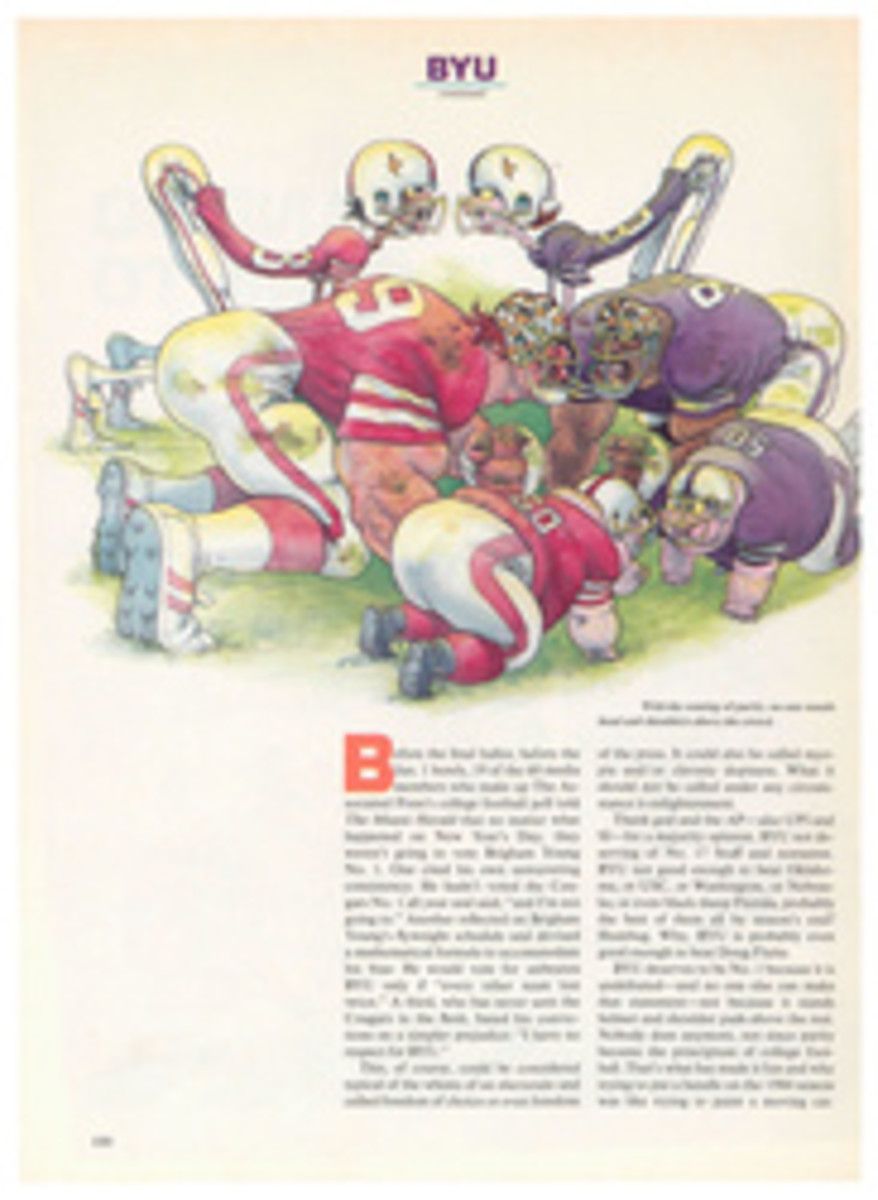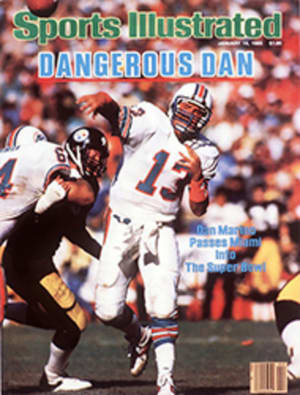
SCORECARD
A STORM, A LULL—AND NOW PHASE 3
On the face of it, William Clark's announcement last week that he will resign as Interior Secretary in March doesn't bode as ill for the environment as William Ruckelshaus's recent resignation as administrator of the Environmental Protection Agency (Score-card, Dec. 10, 1984). After all, the changes Clark wrought at Interior after James Watt's tumultuous tenure ended 15 months ago were largely cosmetic. Clark opened his door to environmental groups, but the un-Watt-ish give-and-take that resulted, welcome though it was, didn't often lead to action. He reduced exploration areas for offshore oil and gas but continued to promote economic development of federal lands and "area-wide" bidding for large offshore tracts. He was more active in protecting endangered species than Watt but less so than earlier Interior Secretaries. Summing up Clark's performance, William Turnage, president of the Wilderness Society, says, "He covered up Watt's disasters while carrying out his policies. In terms of environmental records, they're the two worst Interior Secretaries in the history of the United States."
But bidding good riddance to Clark may be out of order. As Ruckelshaus did at the EPA, Clark defused the controversy embroiling Interior and lifted sagging employee morale. Rep. Morris Udall (D-Ariz.), longtime chairman of the House Interior Committee, says, "He had a sense of fairness. So much of life in government is style. He didn't really advocate or put into effect any new policies that I would approve of, [but] he was direct and forward; his word was good. He brought civilized discourse."
More substantively, Clark sought to protect Interior against an increasingly implacable foe of the environment, the Office of Management and Budget. Using his 20-year friendship with President Reagan to advantage, Clark sometimes successfully fought OMB director David Stockman's attempts to block funds for Western water-resource projects and parklands. It's true that he acted only after Congress firmly reminded him that Interior was legally obliged to spend this money, but, as former Wisconsin Senator Gaylord Nelson, now counselor to the Wilderness Society, says, "When Watt was there, he would be on Stockman's side."
Environmental policy under President Reagan has evolved in phases. Phase 1 was marked by wholesale staff and budget cuts by Watt and EPA administrator Anne Bur-ford and by an assault on long-held beliefs about the proper balance between conservation and development. Phase 2, the parallel tenures of Clark and Ruckelshaus, was a calming period. This lull served Reagan well during the presidential campaign by taking the heat off his environmental record, even as it bolstered Interior and the EPA. Now those agencies, again in tandem, enter Phase 3, in which consideration of key issues, including reauthorization of the Clear Air and Clean Water acts, cornerstones of U.S. environmental law, will almost certainly be delayed as new administrators take over.
The departures of Ruckelshaus and Clark probably will result in a loss of clout for their respective agencies. Ruckelshaus will be replaced by EPA toxic-wastes chief Lee M. Thomas, whose name carries less prestige than that of his predecessor. It's unlikely that Clark's as-yet-unnamed successor will have the same influence he had with the President. This could adversely affect the struggle with OMB at a time when heavy domestic spending cuts are contemplated. Watt once boasted that the Administration would use "the budget to be the excuse to make major policy decisions" on the environment. With the EPA and Interior both in less sure hands, that strategy could now be easier to implement.
THE CARDIAC KIDS
It seems safe to say that the Miami Hurricanes have just completed the wildest 12-month period any college team has gone through since Walter Camp earned his Yale letter sweater. To recap:
•On Jan. 2, 1984, a fingertip deflection by Hurricane roverback Kenny Calhoun foiled a two-point conversion try and preserved a 31-30 Orange Bowl victory over No. 1 and supposedly invincible Nebraska that gave Miami the 1983 national title. The game was described on SI's cover as MIRACLE IN MIAMI.
•On Aug. 27, Miami opened the 1984 season by knocking off its second straight top-ranked (by AP and UPI) opponent—a 20-18 win over Auburn in the Kickoff Classic. The winning points were provided by the second of two come-from-be-hind, fourth-quarter field goals by Greg Cox.
•On Sept. 1, Miami struck for two touchdowns in the last seven seconds to beat Florida 32-20 in what turned out to be the season's only loss for the Gators.
•On Nov. 10, Miami was leading Maryland 31-0 at halftime but then fell victim to the greatest comeback in NCAA Division I history. Final score: Terrapins 42, Hurricanes 40.
•On Nov. 23, Boston College's Doug Flutie completed his instantly legendary 64-yard pass as time ran out for a 47-45 win over Miami in the Greatest Finish Ever, not to be confused with the aforementioned Greatest Comeback Ever.
•On Jan. 1, 1985, in a routinely thrilling barn burner, the Hurricanes blew a 21-7 lead in the Fiesta Bowl and lost to UCLA 39-37 on a 22-yard field goal by the Bruins' John Lee with :51 to play.
You will notice that Miami won the first three of these heart stoppers but lost the last three. In defense of the Hurricanes—and let's face it, they need some defense—they played a hellacious schedule. During the 12-month period, nine of their 14 opponents were bowl teams, and a 10th, Florida, didn't go to a bowl because it was in hot water with the NCAA. A couple of days after the Fiesta Bowl, one member of Miami's Cardiac Kids, junior defensive tackle Kevin Fagan, was asked about the emotional toll of playing for the Hurricanes. Wearily he said. "I've noticed seven or eight gray hairs, and they're all from this year."
NOT-SO-BIG TEN
The Big Ten this season sent six teams to bowl games—only to wind up with its declining football reputation further tarnished. Iowa beat Texas in the Freedom Bowl, but the Big Ten's other postseason participants—Ohio State, Michigan, Wisconsin, Michigan State and Purdue—all lost. Ohio State's 20-17 loss to USC in the Rose Bowl was especially galling. After long dominating the Pac-10, the Big Ten has now lost 14 of the last 16 Rose Bowls. As a result, the Pac-10 now leads the series 20-19.
DUMB PUN IN THE SUN
We can't let the college bowl season end without taking note of the frantic goings-on that occurred four days before Maryland beat Tennessee 28-27 in the Sun Bowl in El Paso. The cause of the excitement was a mock hijacking of a Maryland team bus as it headed to a Sheriff's Posse Dinner. Trouble was, except for Terps coach Bobby Ross, nobody on the bus had been forewarned about the ambush.
Bear in mind that the people responsible for the prank were all grown-ups. First there were the Sun Bowl promoters who gave their O.K. to the ambush. Then there were the "bandits"—actually, reserve members of the El Paso County sheriff's department dressed in dirty jeans and bandannas—who boarded the bus brandishing guns. As some Terrapin players hit the floor, one of the intruders put a gun to the head of defensive back Donald Brown and forced him and two assistant coaches out of the bus. They were put into a pickup truck, which subsequently was chased at 80 mph, amid a blaze of blank shots, by sheriff's deputies in on the hoax. Finally there was Ross, who said of the incident, "I thought it was kind of humorous to see our kids scatter like they did. It really brought out a lot of laughter."
But the laughter came only after the Maryland players realized that the ambush was a prank. Before that they were genuinely terrified, none more so than Brown, who told SI's Bailey Breene, "The guy said, 'Come on, you're coming with me,' and pointed the gun at my head. I was frightened the whole time. I had an idea that the Sun Bowl people wouldn't let me die, but you never know."
In a society in which crime and violence are only too real, the fake ambush was not only dumb and tasteless but also potentially dangerous. One shudders to think what might have happened if any of the players or coaches had used a knife or fists to resist the intruders. As Brown says, "I had visions of jumping up and grabbing the gun. I was shocked."
THE GROOM WORE BLACK AND BLUE
In case you missed it, there was a big wedding—for real—the other day on the USA Network's Wrestling TNT show. In a traditional ceremony performed by a clergyman pseudonymously billed as the Rev. Meyer Lipschitz, Butcher Paul Vachon married Diane Page in a wrestling ring festooned with flowers and ferns. The bride was given away by George (The Animal) Steele. The Wild Samoans and Mr. and Mrs. Executioner were among the guests. Lou Albano rose to object to the union on unspecified grounds, the ring bearer was tripped by Freddie Blassie, and no sooner did Vachon kiss the bride than he was flattened by a body slam by Jesse Ventura. At the reception, the bride got a pie—coconut cream—in the face, the first of dozens of such confections thrown. A USA Network press release described the event as "touching.''
ILLUSTRATION
SAM Q. WEISSMAN
PHOTO
TITAN SPORTS
TNT broadcasters Vince McMahon and Lord Alfred Hayes after the reception.
THEY SAID IT
•Brook Steppe. Detroit Piston guard, after a game in the Silverdome: "It was the coldest gym I ever played in. A couple of rebounds came down with frost on them."
•Kareem Abdul-Jabbar, during a TV interview with NBAers-turned-sportscasters Bill Russell and Rick Barry: "It's nice being interviewed by tall people."

